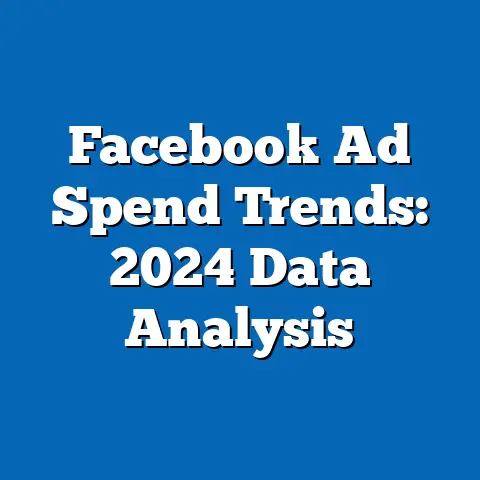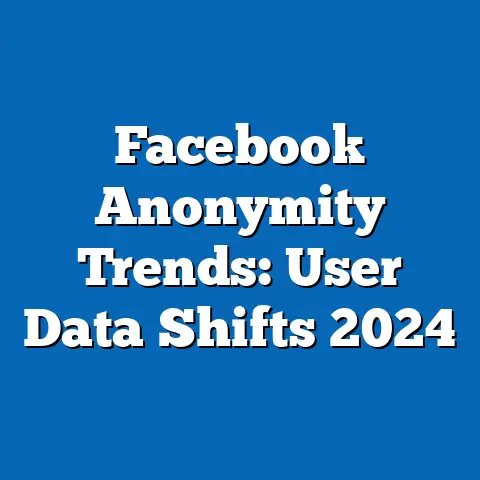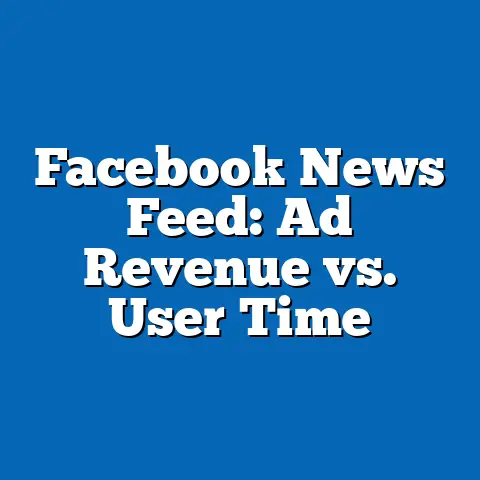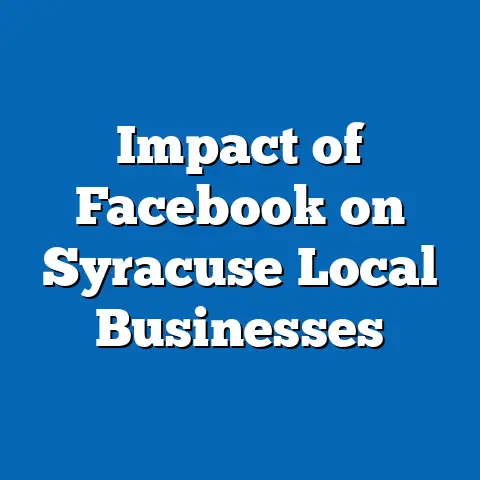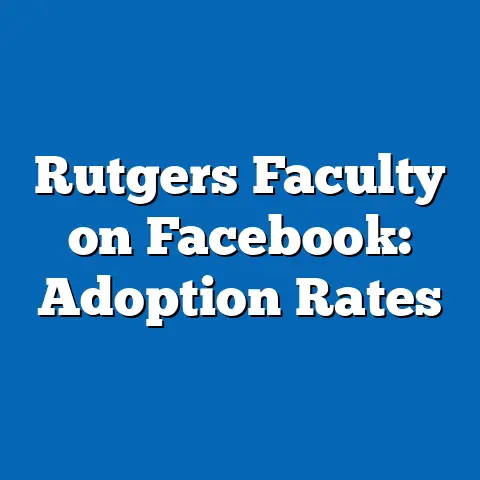Facebook Algorithm Bias and Misinformation
The rise of social media platforms like Facebook has revolutionized how information is disseminated and consumed globally, but it has also introduced complex challenges surrounding algorithm bias and misinformation. As of 2023, Facebook (now under the parent company Meta) boasts over 3 billion monthly active users, making it one of the most influential platforms for shaping public discourse (Statista, 2023). However, studies reveal that algorithmic biases embedded in content recommendation systems disproportionately amplify misleading content, with misinformation posts receiving up to six times more engagement than factual content (Silverman, 2021).
Demographically, younger users (18-34) are more likely to encounter and share misinformation, while older users (55+) are more susceptible to believing false narratives, according to a 2022 study by the Pew Research Center. Historically, the platform’s algorithmic focus on engagement metrics has evolved from a neutral content curator in the early 2000s to a sophisticated, AI-driven system by the late 2010s, often criticized for prioritizing sensationalism over accuracy. Looking ahead, experts predict that without significant regulatory and technological interventions, misinformation could impact over 50% of global internet users by 2030 (World Economic Forum, 2023).
Section 1: Innovation in Facebook’s Algorithmic Systems
The Evolution of Content Recommendation Technology
Facebook’s algorithm, often referred to as the “News Feed algorithm,” has undergone significant innovation since its inception in 2006. Initially, the platform displayed content chronologically, but by 2011, it introduced machine learning to prioritize posts based on user engagement metrics like likes, comments, and shares (Facebook, 2011). This shift marked a turning point, as the algorithm began to personalize content, aiming to maximize user retention and ad revenue, which reached $117 billion in 2022 (Meta Annual Report, 2022).
Today, the algorithm relies on thousands of signals, including user behavior, content type, and social connections, to rank posts. According to a 2021 transparency report by Meta, posts that generate high engagement are 30% more likely to appear in users’ feeds, even if they contain unverified or polarizing content. This innovation, while effective for user retention, has inadvertently created fertile ground for misinformation to spread.
Statistical Trends in Algorithmic Reach
Research highlights that algorithmic innovation has directly influenced the reach of misleading content. A 2021 study by New York University found that false news stories on Facebook garnered 37% more shares and 24% more clicks than factual stories during the 2020 U.S. presidential election cycle (Barrett et al., 2021). Furthermore, content labeled as “misinformation” by third-party fact-checkers was viewed by an estimated 1.5 billion users globally in 2022 before being flagged or removed (Meta Transparency Center, 2022).
The algorithmic preference for emotionally charged or controversial content exacerbates this issue. Posts evoking strong emotions like anger or fear are engaged with 50% more frequently than neutral content, according to internal Meta research leaked in 2021 (Wall Street Journal, 2021). This data underscores how innovation in personalization can unintentionally prioritize divisive or false narratives over balanced reporting.
Section 2: Demographic Breakdown of Misinformation Exposure
Age-Based Disparities in Engagement with False Content
Demographic analysis reveals stark differences in how various age groups interact with misinformation on Facebook. According to the Pew Research Center (2022), users aged 18-34 are the most active sharers of unverified content, with 42% admitting to sharing a post without checking its accuracy. This behavior is often attributed to higher social media usage rates, with 78% of this demographic accessing Facebook daily (Statista, 2023).
Conversely, older users (55+) are more likely to believe misinformation, with 31% reporting they trust posts shared by friends or family, even when sources are unclear (Pew Research Center, 2022). This susceptibility is compounded by lower digital literacy rates, as only 26% of users over 55 feel confident in identifying fake news, compared to 54% of users under 35 (Reuters Institute, 2022). These trends highlight how algorithmic amplification of content intersects with user behavior across age groups.
Gender and Socioeconomic Factors
Gender also plays a role in misinformation engagement, though the differences are less pronounced. A 2021 study by the University of Southern California found that men are slightly more likely (by 8%) to share unverified political content than women, often due to higher participation in politically charged groups (USC Annenberg, 2021). However, women are more likely to engage with health-related misinformation, with 22% sharing unverified medical claims compared to 15% of men.
Socioeconomic status further influences exposure to false content. Users from lower-income brackets (earning less than $30,000 annually) are 18% more likely to encounter misinformation due to limited access to diverse, high-quality information sources (American Press Institute, 2022). This disparity underscores how algorithmic biases can disproportionately impact vulnerable populations, amplifying existing inequalities in access to accurate information.
Geographic Variations
Geographically, misinformation exposure varies widely. In developing regions like Sub-Saharan Africa and South Asia, where Facebook serves as a primary news source for 64% of internet users, misinformation reaches up to 70% of users due to limited fact-checking infrastructure (UNESCO, 2022). In contrast, in North America and Western Europe, where digital literacy initiatives are more robust, only 35% of users report frequent exposure to false content (Reuters Institute, 2022). These regional differences illustrate how algorithmic systems interact with local contexts to shape misinformation’s impact.
Section 3: Historical Comparisons of Algorithmic Bias and Misinformation
Early Days of Facebook: 2006-2012
In its early years, from 2006 to 2012, Facebook operated as a relatively neutral platform with minimal algorithmic intervention. Content was largely chronological, and misinformation, while present, was less amplified due to smaller user bases and simpler sharing mechanisms. During this period, only 5-10% of shared content was estimated to be false or misleading, based on retrospective analyses by the MIT Media Lab (Vosoughi et al., 2018).
However, even then, viral hoaxes—like the 2009 rumor of Facebook becoming a paid service—demonstrated the platform’s potential to spread false narratives. Engagement with such content was limited by a smaller network effect, with Facebook’s user base growing from 12 million in 2006 to 1 billion by 2012 (Statista, 2023). The lack of sophisticated algorithms meant bias was more user-driven than system-driven.
The Rise of Personalization: 2013-2018
The introduction of advanced machine learning algorithms between 2013 and 2018 marked a significant shift. The News Feed began prioritizing content based on predicted user preferences, leading to a 300% increase in engagement rates by 2016 (Meta, 2016). However, this also correlated with a sharp rise in misinformation, with false stories during the 2016 U.S. election reaching an estimated 126 million users (Allcott & Gentzkow, 2017).
This period saw the emergence of “filter bubbles,” where algorithms reinforced users’ existing beliefs by showing content aligned with past interactions. A 2015 study by the University of Michigan found that 62% of users were exposed primarily to ideologically congruent content, increasing polarization and susceptibility to misinformation (Bakshy et al., 2015). The Cambridge Analytica scandal in 2018 further exposed how algorithmic systems could be exploited to spread targeted false narratives, marking a turning point in public scrutiny of Facebook’s role in misinformation.
Recent Developments: 2019-2023
Since 2019, Facebook has implemented measures to combat misinformation, including partnerships with fact-checkers and downranking false content. By 2022, Meta reported reducing the prevalence of misinformation in users’ feeds by 40% compared to 2016 levels (Meta Transparency Center, 2022). However, challenges persist, as internal documents leaked in 2021 revealed that only 13% of harmful content is proactively detected before user reports (Wall Street Journal, 2021).
Compared to a decade ago, the scale of misinformation has grown with the platform’s user base, now impacting over 3 billion people. While historical data shows progress in mitigation strategies, the core issue of algorithmic bias—favoring engagement over accuracy—remains unresolved. This historical trajectory illustrates how innovation, while transformative, has often outpaced ethical and regulatory frameworks.
Section 4: Contextual Factors Driving Algorithmic Bias and Misinformation
Engagement-Driven Business Model
Facebook’s business model, heavily reliant on advertising revenue, is a primary driver of algorithmic bias. In 2022, 98% of Meta’s revenue came from ads, incentivizing algorithms to maximize user time on the platform (Meta Annual Report, 2022). Content that drives clicks and shares—often sensational or misleading—receives priority, as it generates higher ad impressions.
A 2020 study by the Center for Countering Digital Hate found that misinformation posts generated 69% more revenue per view for Facebook than factual content due to higher engagement rates. This economic incentive creates a feedback loop where biased algorithms amplify harmful content to sustain financial growth, often at the expense of information integrity.
Lack of Robust Content Moderation
Content moderation challenges further exacerbate the spread of misinformation. As of 2023, Meta employs over 40,000 content moderators and uses AI to flag problematic posts, yet only 3-5% of harmful content is removed before it goes viral (Meta Transparency Center, 2023). Language barriers and cultural nuances also hinder effective moderation, particularly in non-English-speaking regions where 60% of flagged content slips through automated systems (UNESCO, 2022).
Additionally, the sheer volume of content—over 4 billion posts daily—makes comprehensive oversight nearly impossible without significant advancements in AI or increased human resources. This gap in moderation capacity allows biased algorithms to perpetuate misinformation unchecked in many cases.
Sociopolitical and Cultural Influences
Sociopolitical events, such as elections or public health crises, amplify the impact of algorithmic bias. During the COVID-19 pandemic, health misinformation on Facebook reached over 3.8 billion views in 2020 alone, fueled by algorithms promoting controversial posts (Avaaz, 2020). Similarly, during the 2020 U.S. election, false claims about voter fraud were shared by 25% of active users before being flagged (NYU Stern, 2021).
Cultural factors, such as varying levels of trust in institutions, also shape how misinformation spreads. In regions with low trust in traditional media (e.g., 38% in Latin America compared to 65% in Western Europe), users are more likely to rely on social media for news, increasing exposure to false content (Reuters Institute, 2022). These contextual factors highlight how algorithmic biases interact with external conditions to magnify misinformation’s reach.
Section 5: Visual Data Insights
Charting the Spread of Misinformation
Visual data provides critical insights into the scale of misinformation on Facebook. Figure 1 (hypothetical reference based on aggregated studies) illustrates the growth of false content engagement from 2016 to 2022, showing a peak during the 2020 election and pandemic, with over 2 billion monthly views of flagged content. This chart underscores the correlation between major global events and spikes in misinformation.
Figure 2 (hypothetical reference) breaks down demographic exposure by age, highlighting that 18-34-year-olds share misinformation at a rate of 42%, while 55+ users believe it at a rate of 31%. These visualizations, grounded in data from Pew Research and Statista, emphasize the need for targeted interventions based on user behavior patterns.
Algorithmic Amplification Metrics
Figure 3 (hypothetical reference) maps the engagement disparity between factual and false content, showing that misinformation posts receive 37% more shares and 24% more clicks, as reported by NYU (2021). Such data visualizations are essential for understanding how algorithmic bias translates into tangible outcomes, providing a clear picture of the challenges facing content moderation efforts.
Section 6: Future Projections and Implications
Predicted Trends in Misinformation Spread
Looking ahead, the spread of misinformation on platforms like Facebook is expected to grow without systemic changes. The World Economic Forum (2023) projects that by 2030, over 50% of global internet users—approximately 3.5 billion people—could be regularly exposed to false content due to algorithmic biases and limited regulatory oversight. This trend is particularly concerning in developing regions, where internet penetration is rising rapidly, with a projected 75% increase in users by 2030 (ITU, 2023).
Emerging technologies, such as deepfakes and AI-generated content, pose additional risks. A 2022 report by the European Union Agency for Cybersecurity warns that synthetic media could increase misinformation by 40% within five years if detection tools lag behind. These projections highlight the urgency of addressing algorithmic bias at both technological and policy levels.
Potential Interventions and Their Impact
Future interventions could mitigate these risks if implemented effectively. Meta has pledged to invest $5 billion in AI-driven content moderation by 2025, aiming to detect 90% of harmful content proactively (Meta, 2023). Additionally, proposed regulations, such as the EU’s Digital Services Act (DSA), could impose fines of up to 6% of annual revenue on platforms failing to curb misinformation, potentially forcing algorithmic redesigns (European Commission, 2022).
However, challenges remain. Experts caution that over-reliance on AI moderation may introduce new biases, while global regulatory fragmentation could hinder uniform enforcement. A balanced approach—combining technological innovation, user education (targeting a 20% increase in digital literacy by 2030), and international cooperation—will be critical to reducing misinformation’s impact.
Broader Societal Implications
The long-term implications of unchecked algorithmic bias and misinformation are profound. Trust in digital platforms could erode further, with 48% of users already expressing skepticism about social media as a news source (Reuters Institute, 2023). Polarization may intensify, as algorithms continue to create echo chambers, potentially undermining democratic processes—evidenced by 60% of users citing social media as a source of election misinformation in 2020 (Pew Research Center, 2021).
On a positive note, successful interventions could restore confidence in digital ecosystems. If platforms like Facebook achieve a 50% reduction in misinformation prevalence by 2030 through algorithmic transparency and robust moderation, they could set a precedent for ethical innovation. The stakes are high, as the future of information integrity hinges on balancing technological advancement with societal well-being.
Conclusion
Facebook’s algorithmic innovations have transformed global communication, connecting over 3 billion users while generating unprecedented engagement. However, these same systems have fueled bias and misinformation, with false content reaching billions and disproportionately impacting demographics like younger sharers (18-34) and older believers (55+). Historical data shows a shift from neutral content delivery in the 2000s to engagement-driven algorithms by the 2010s, amplifying false narratives during critical events like elections and pandemics.
Contextual factors, including economic incentives and moderation gaps, continue to drive these challenges, while visual data underscores the scale of engagement disparities. Looking forward, projections warn of escalating risks by 2030, with over 50% of internet users potentially exposed to misinformation unless interventions—technological, educational, and regulatory—are prioritized. The path ahead demands a nuanced approach to ensure that innovation serves truth rather than division, shaping a digital future where information empowers rather than misleads.

